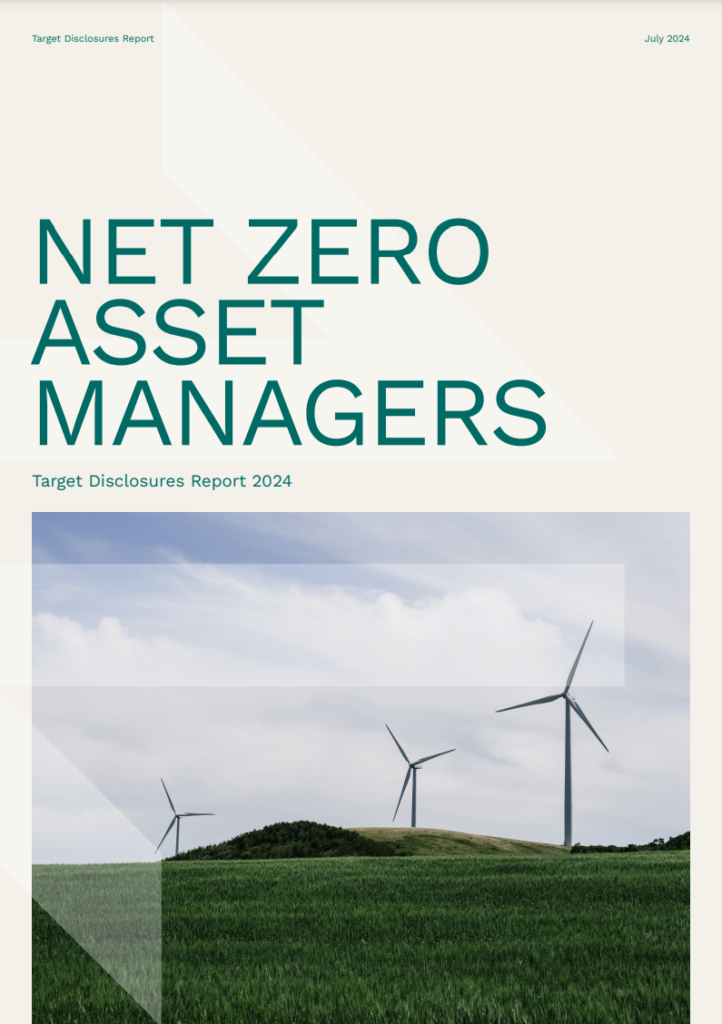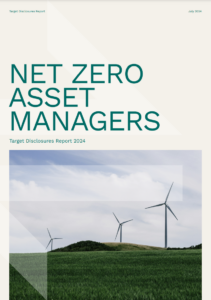The Net Zero Asset Managers initiative publishes report on signatories’ target disclosures as the initiative grows to over 325 signatories
24 July 2024
The Net Zero Asset Managers (NZAM) initiative has released its latest Target Disclosures Report, which highlights the increase in voluntary, individual net zero commitments and targets from the asset management industry over time.

- As of 31 January 2024, the total number of asset managers that have set individual initial targets increased to 264.
- Most targets focus on real economy decarbonisation. Decarbonisation targets are the predominant target type (62.5%), followed by alignment targets (53%), and engagement targets (23%).
- 98% have set interim targets for/before 2030, with 26% targeting as early as 2025.
The Net Zero Asset Managers (NZAM) initiative has released its latest Target Disclosures Report, which highlights the increase in voluntary, individual net zero commitments and targets from the asset management industry over time.

Download the Target Disclosures Guide 2024
View the target disclosures
Read the full press release
Since the last target disclosures announcement, more than 30 asset managers have joined the initiative and over 90 have disclosed targets. As of 31 January 2024, 264 signatories have set and disclosed targets to guide their individual net zero investment practices.
The report highlights the significant growth of the initiative since its inception in December 2020. Currently, more than 325 asset managers, representing over USD 57.5 trillion in assets under management, have made individual commitments, consistent with their fiduciary duties to clients and beneficiaries.
The report gives new insights into the geographical makeup of the initiative’s signatory base and details the target-setting methodologies used. It offers an overview of the types of targets and combinations utilised, providing signatories with valuable benchmarking opportunities and insight into industry-wide trends.
Key highlights include:
- Target types: Reflecting signatories’ collective ambition of mitigating financial risk through real economy decarbonisation, decarbonisation targets emerged as the predominant target type (62.5%). 53% of signatories with target disclosures have set alignment targets, and 23% have set engagement targets.
- Target years: NZAM signatories are taking the imperative to address climate risk in the short term as well as long term, with 98% having set interim targets for or before 2030, and over a quarter (26%) having a first target of next year, in 2025.
- Methodological approaches: 51% of disclosing signatories use Paris Aligned Investment Initiative’s Net Zero Investment Framework; 22% use Science Based Targets initiative for Financial Institutions; 14% use the Net Zero Asset Owner Alliance Target Setting Protocol, 12% use a combination of the above methodologies, and 10% chose to use their own unique methodology.
- Asset classes: Listed equities and corporate fixed income have the highest inclusion rates.
- Geographical breakdown: The initiative reflects a global commitment with the signatories being headquartered in over 35 countries. Europe leads in representation, with over 200 signatories, followed by North America with over 70, and Asia with over 20. Oceania follows with 17 signatories, whilst South America and Africa have seven and one signatory, respectively.
Rebecca Mikula-Wright, CEO, AIGCC, said: “Today’s Target Disclosures Report demonstrates the growing commitment asset managers have made towards the goal of net zero. The increase in asset managers setting and disclosing targets highlights our industry’s proactive stance on mitigating the financial risk associated with climate change.
“This momentum must continue in the Asia-Pacific. We now need to see more granular and ambitious interim targets that work towards real economy decarbonisation goals.
“Investors who have set and disclosed their targets are at a competitive advantage, showing their ability to manage the risks and opportunities in the global transition to a net zero economy.”